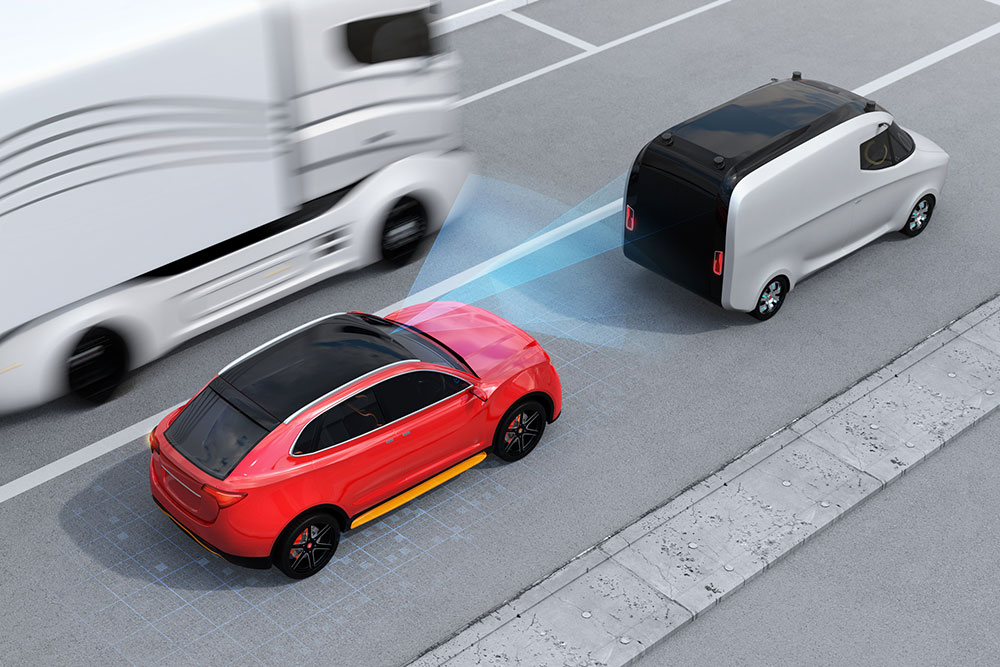Auto braking technology mandated for cars in Australia

RACQ has welcomed the Federal Government’s introduction of a new Australian Design Rule (ADR) that mandates the fitment of autonomous emergency braking (AEB) for new passenger and light-goods vehicles.
Under the new legislation, AEB systems capable of detecting collisions with other vehicles must be installed from 1 March 2023 for all new models of vehicles and 1 March 2025 for all other new vehicles.
From 1 August 2024, AEB systems capable of detecting collisions with other vehicles and pedestrians must be installed for all new models of vehicles and 1 August 2026 for all other new vehicles.
RACQ Head of Public Policy Susan Furze said AEB was already a widely available and proven technology that had been shown to reduce crashes and save lives.
“Mandating life-saving technology can protect vehicle occupants as well as vulnerable road users including pedestrians,” Ms Furze said.
“Humans don’t always react fast enough or make the right decisions, and this technology can help to reduce situations that might otherwise result in tragedy.”
Assistant Minister to the Deputy Prime Minister Kevin Hogan said the step was part of the Federal Government’s commitment to improving road safety and reducing the number of deaths and serious injuries occurring on our roads.
“Vehicle technology has an important role to play in reducing road trauma, which is why we have introduced new standards that mean AEB systems must be installed in all new light vehicles,” Mr Hogan said.
“There will be a progressive rollout of the new standards, which will start to apply from March 2023 – giving manufacturers the time needed to effectively make the transition.
“AEB systems detect likely forward collisions with another vehicle or pedestrian, provide the driver with a warning and if the driver does not respond, apply the brakes automatically.
“To date, many systems have been unable to detect pedestrians. These new national road vehicle standards would require light vehicle AEB systems to detect likely forward collisions with both vehicles and pedestrians to help keep some of our most vulnerable road users safe as well.”
Australasia’s independent vehicle safety consumer advocate, ANCAP SAFETY, also welcomed the announcement, quoting statistics that indicated implementation of the new ADRs would save 580 lives and avoid 20,400 serious and 73,340 minor injuries – with a net benefit of close to $1.9 billion to the Australian economy.
ANCAP has encouraged the voluntary fitment of AEB technology across the Australian and New Zealand fleets since 2012, and more formally through its safety testing and star rating program since 2015.
“The announcement by the Australian Government to mandate autonomous emergency braking is a welcome step in closing the gap to ensure all new vehicles are equipped with this life-saving technology,” said ANCAP Chief Executive Officer Carla Hoorweg.
“A key role played by ANCAP is to build consumer awareness, confidence and demand for vehicle safety features and technologies through its non-regulatory approach.
“AEB has consistently been shown to improve safety outcomes, and our latest analysis of new light vehicle sales shows 89.5 per cent of all new vehicles sold - 222 models - were available with AEB.
“This is a significant achievement, and the automotive industry is to be congratulated for its efforts in achieving such a high fitting rate ahead of regulatory intervention,” Ms Hoorweg said.
“Voluntary fitment alone however cannot achieve full market coverage. The mandating of AEB will push manufacturers that have been slow to introduce this technology to catch up – ensuring 100% of new Australian vehicles will have the benefit of AEB from March 2025.”
ANCAP said AEB had been shown to reduce police-reported crashes by 55%, rear-end crashes by 40% and vehicle occupant trauma by 28%.
The organisation said it expected these safety benefits to improve further following the introduction of the ADR and evolution in the sophistication of AEB systems.
ANCAP’s analysis on the availability of AEB, including the AEB status of the 100 top-selling models, can be viewed here.
Related topics
Things to note
The information in this article has been prepared for general information purposes only and is not intended as legal advice or specific advice to any particular person. Any advice contained in the document is general advice, not intended as legal advice or professional advice and does not take into account any person’s particular circumstances. Before acting on anything based on this advice you should consider its appropriateness to you, having regard to your objectives and needs.
Insurance Products (excluding Travel Insurance) are issued by RACQ Insurance Limited ABN 50 009 704 152 (RACQI) and arranged by its agent, RACQ Distribution Services Pty Ltd (RDS) ABN 35 116 361 650, AFSL 567130 and RDS' authorised representatives (including RACQ Operations Pty Ltd ABN 80 009 663 414, AR No. 234978 (RACQO). Conditions, limits and exclusions apply. RDS and RACQO are in the RACQ group of companies. One of the companies in the RACQ group of companies has a minority shareholding in RACQI.
RDS and RACQO have not taken your personal objectives, circumstances or needs into account when preparing advice regarding insurance products and you will need to consider whether the advice is appropriate for you. Read the Product Disclosure Statement (PDS) and any applicable Supplementary PDS before making a purchase decision on this product. You can also access our Target Market Determinations on this website. RDS receives a commission from RACQI for the policies it arranges. RACQO receives fees paid for services it provides to RDS. Further details about remuneration are available on request prior to purchasing.
Banking and loan products issued by Members Banking Group Limited ABN 83 087 651 054 AFSL/Australian credit licence 241195 trading as RACQ Bank. Terms, conditions, fees, charges and lending policies apply. This is general advice only and may not be right for you. This information does not take your personal objectives, circumstances or needs into account. Read the disclosure documents for your selected product or service, including the Financial Services Guide and the Terms and Conditions, and consider if appropriate for you before deciding.
Except for RACQ Bank, any RACQ entity referred to on this page is not an authorised deposit-taking institution for the purposes of the Banking Act 1959 (Cth). That entity’s obligations do not represent deposits or other liabilities of RACQ Bank. RACQ Bank does not guarantee or otherwise provide assurance in respect of the obligations of that entity, unless noted otherwise.
RACQ Bank subscribes to the Customer Owned Banking Code of Practice which establishes higher standards than the law requires. The Code reflects modern consumer expectations and developments in approaches to issues such as consumer vulnerability, guarantors, and supporting customers through financial hardship. Please read our Customer Owned Banking Code of Practice page for more information.
RACQ Operations Pty Ltd (ABN 80 009 663 414 AR 000234978) and Members Travel Group Pty Ltd (ABN 45 144 538 803 AR 000432492) are acting as an Authorised Representative of the issuer of the insurance, Tokio Marine & Nichido Fire Insurance Co., Ltd. (ABN 80 000 438 291 AFSL 246 548). Any advice set out above is general in nature only, and does not take into account your objectives, financial situation or needs. Before purchasing any travel products, please consider the RACQ Travel Insurance Product Disclosure Statement (PDS) and the Target Market Determinations (TMDs) that apply to these products. Whilst the PDS outlines the Terms and Conditions of these products, the TMDs outline the intended class of customers that comprise the target market for these travel products. This will allow you to consider which products best suit your objectives, financial situation and needs and consider the products appropriateness to your personal circumstances. TMDs also outline matters involving the distribution and the review of these products. The PDS, Supplementary PDS and TMDs for each travel product can be found here.
